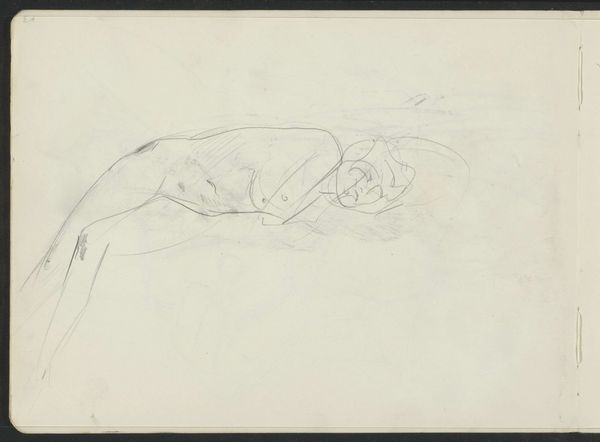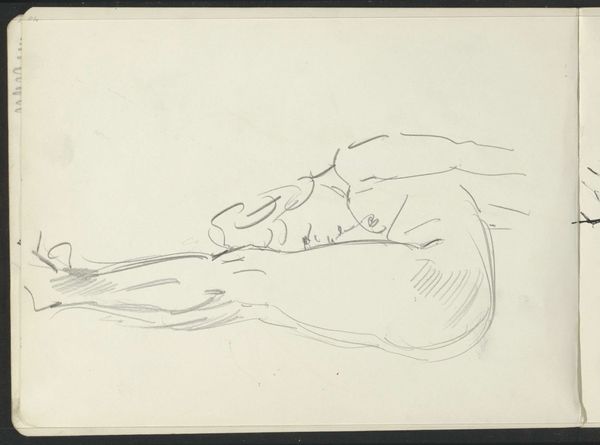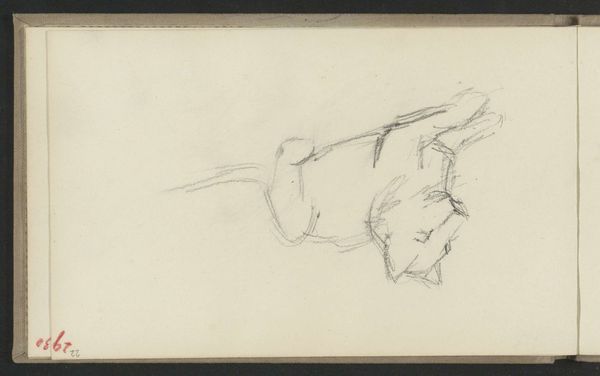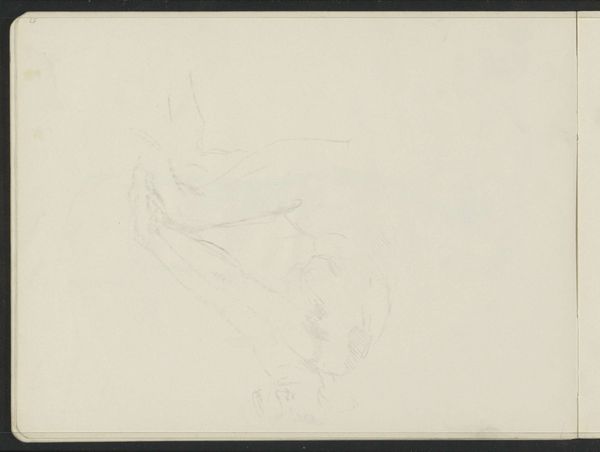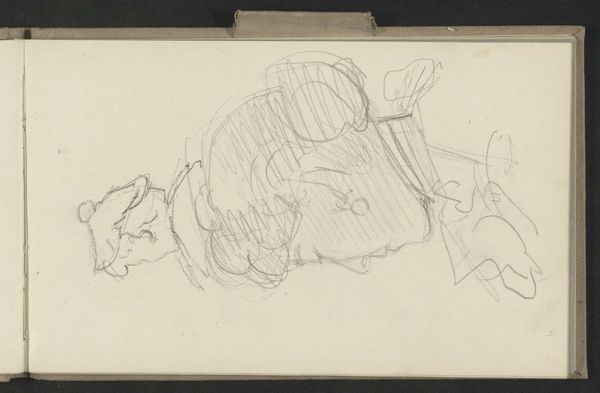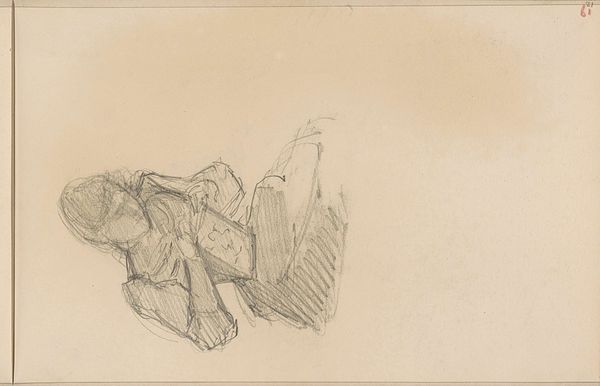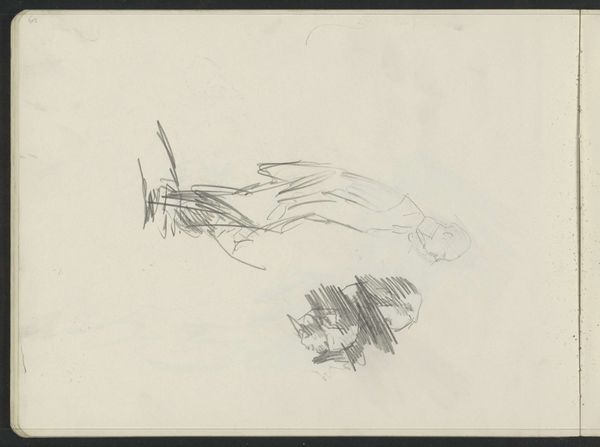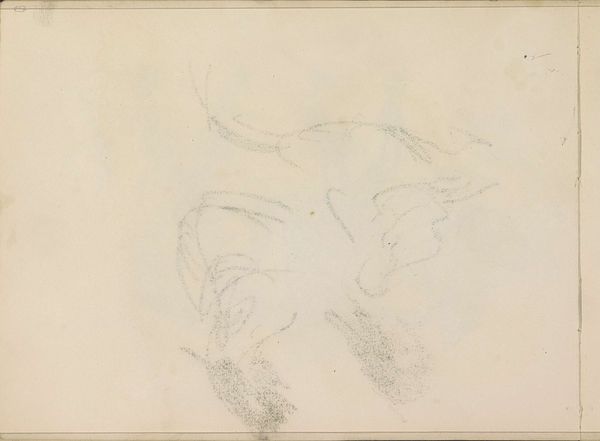
drawing, pencil
#
portrait
#
drawing
#
pencil sketch
#
figuration
#
pencil
#
nude
Copyright: Rijks Museum: Open Domain
Curator: This delicate drawing, titled "Reclining Female Nude," was rendered in pencil by Isaac Israels, likely sometime between 1915 and 1925. You can find it here at the Rijksmuseum. Editor: Wow, it’s...unfinished. Like a fleeting thought captured on paper. There's a vulnerable quality to the figure; she seems almost to disappear into the background. Curator: Absolutely. The unfinished quality speaks to its nature as a sketch, offering a glimpse into Israels' process. Considering the period, this work challenges academic conventions by representing the nude in a modern, less idealized form. We might think about how women artists were similarly breaking free of traditional expectations at that time. Editor: It’s more intimate than, say, a grand, imposing nude in oil. I imagine Israels sketching this in private. Did the model know she was being drawn this way? Or is it an exercise from the artist’s imagination? The lines are so subtle and free; it feels like he's tracing the very essence of a human form without constraint. I wonder about the space it exists in; she could be floating. Curator: Those are insightful observations. Israels often focused on capturing everyday life. Seen through a contemporary lens, the work touches upon themes of vulnerability and representation within a historically gendered gaze. Whose gaze is centered? And how does that affect the viewer's perception? Editor: It also has this melancholy vibe to it. The model’s expression – it’s like a little sadness hangs in the air, doesn’t it? Maybe because it feels so impermanent. Like the moment will disappear with a breath. Curator: Indeed. It prompts questions about the fleeting nature of beauty and the artist's attempt to capture a moment in time. The drawing allows for diverse interpretations when it comes to understanding historical expectations around the representation of the female form and body image, as well as issues of agency and empowerment that remain important to contemporary feminist discourses. Editor: It makes you want to grab a pencil and sketch, just to feel the line moving across paper. Curator: Precisely. It’s an invitation to explore and question established notions, through engagement with a seemingly simple, yet profound, artwork.
Comments
No comments
Be the first to comment and join the conversation on the ultimate creative platform.
